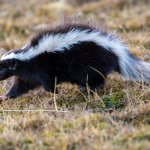With their bright pink feathers, long slender legs and prominent bills, flamingos are easily the most recognized water birds. They are often associated with warm, tropical areas, and rightfully so, as they are native to such climates. There are six different species of flamingo – Greater flamingo, Lesser flamingo, Chilean flamingo, Andean flamingo, James’ (or Puna) flamingo and American (or Caribbean) flamingo – found in tropical and sub-tropical locations ranging from the Caribbean and South America to Africa, India and the Mediterranean, usually in lakes or lagoons far inland or near the sea. Since flamingos are social birds, you’ll often find them in groups. Sometimes as many as tens of thousands live together in a single colony.
So, here’s the answer to the question most often asked: Why are the pink? Flamingos’ flamboyant pink, orange and red colors are a result of what they eat. Flamingos are actually born with grey feathers, which gradually turn pink in the wild due to their diet. Flamingos feed off of algae and tiny animals like brine shrimp, crustaceans, small fish and insect larvae, which contain a natural pink dye called canthaxanthin. But according to Janeen Moore, bird keeper at the Cape May County Zoo, flamingos’ species can also affect their coloring. “All of our flamingos are fed the same prepared diet, but you’ll notice that the Greater flamingos are a lighter pink.”
What about their long limbs? Flamingos’ lengthy legs and webbed feet allow them to wade into deep waters to feed. They usually stomp around in the marshes, releasing any hiding critters. Flamingos’ flexible, long necks let them bend downward to search for food, and their curved bills contain comb-like lamellae that filter shrimp and other organisms from the water. Flamingos’ long limbs contribute to their overall average height of three to five feet.
Flamingos are often depicted standing on one leg. Janeen tells us, “It’s simply a comfortable position.”
While no species of flamingo is listed as “endangered,” all species are considered threatened and in need of protection. Zoos have been successful in breeding certain breeds of flamingos to enhance their conservation.
The Cape May County Zoo received its first flamingo shortly after the World of Birds Aviary opened in 1998. At one point, the zoo had 29 flamingos; some of them even laid eggs, but unfortunately none were fertile.
Today, the zoo is currently home to two Greater flamingos from Africa, three American/Caribbean flamingos from multiple locations, and one hybrid flamingo from the National Aviary in Pittsburgh. One of the Cape May County Zoo’s most famous flamingos is Bo, known for his bow-leggedness. Bo was originally in San Antonio, but came to the Cape May County Zoo from the Como Zoo in St. Paul, Minn. through the Species Survival Plan (SSP) program.
The Cape May County Zoo still has two flamingos from the original flock acquired in 1998! Although flamingos are considered geriatric at age 35, their usual lifespan is around 50 years in the wild. However, it is not unusual for them to live up to 60-70 years in zoos. In fact, the world’s oldest flamingo reached age 83 at the Adelaide Zoo in Australia before passing in 2014.
The Cape May County Zoo was once home to a few superstar flamingos. In 2007, the zoo received 13 Chilean flamingos from Michael Jackson’s Neverland Ranch. The zoo held them here for a number of years, but they were eventually transferred to a private owner’s property.
The Cape May County Zoo hopes to contribute to the survival of flamingos in the future. “We’re hoping to get more flamingos down the road through the SSP,” says Janeen. “At the moment, we don’t have the numbers to breed them. They need a large group for their breeding ritual.”
Flamingos are currently part of 76 specimens representing 25 different species of birds at the Cape May County Zoo’s World of Birds Aviary. You’ll find them outside in the Flamingo Yard in the summer, and inside the Aviary in the winter. They are under the care of Janeen and her partner Judith Robin Kirwin, who’s been working by Janeen’s side in all of Janeen’s 21 years at the zoo.
Come visit the fascinating flamingo, and say hello to Janeen and Judith!
Wildwood Crest – Several of Donald Trump’s Cabinet picks have created quite a bit of controversy over the last few weeks. But surprisingly, his pick to become the next director of the FBI hasn’t experienced as much…








